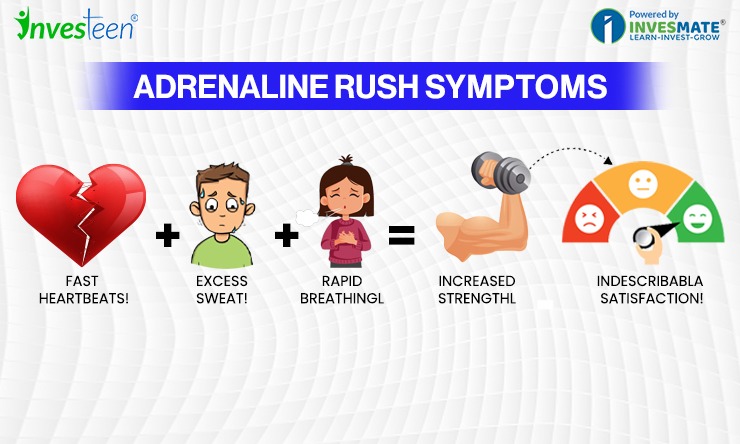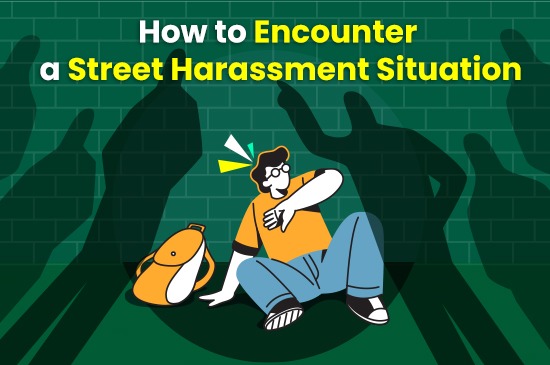When people think of self-defense, images of martial arts moves or physical combat often come to mind. However, true self-defense is much more than that—it doesn’t have to involve fighting at all. The most effective strategies leverage psychology, situational awareness, and non-violent techniques to stay safe. Understanding the mindset of attackers, the psychological impact on victims, and strategic approaches to de-escalation can empower anyone to navigate dangerous situations without resorting to physical confrontation. By learning to interpret human behavior, identify potential threats, and use psychological tactics, you can effectively protect yourself and others, making self-defense a powerful skill that goes far beyond physical strength.
Let’s explore how understanding human behavior can empower you to stay safe without ever throwing a punch.
How Adrenaline Helps (and Challenges) You in Danger

When you feel scared or threatened, your body activates the fight or flight response to protect you. This happens because of a powerful hormone called adrenaline, which is like your body’s emergency booster. This hormone gives you more energy, makes you stronger and faster, and helps you stay focused. It’s your body’s way of preparing to protect itself. But adrenaline can also make you act without thinking, take unnecessary risks, or miss other dangers around you. That’s why it’s important to stay calm and use this energy wisely in stressful situations.
Cracking the Mind of an Attacker
To outsmart an attacker, you need to understand their mindset. Most attackers are motivated by fear, dominance, or desperation. They look for easy targets—distracted or vulnerable individuals—because they want to feel in control or retaliate for perceived wrongs. Some act out of desperation for recognition, seeking to make a statement through violence. Understanding this mindset helps you stay one step ahead: show confidence, stay alert, and avoid appearing vulnerable. By being aware of these motivations, you can take smarter steps to protect yourself and even deter potential threats.
The Power of Awareness and Prevention
Awareness is your first line of defense. Stay alert to your surroundings, especially in unfamiliar or high-risk environments. Projecting confidence through your body language—standing tall, maintaining eye contact, and walking with purpose—can make you less appealing to potential attackers. Prevention also means avoiding risky behaviors, like walking alone in dimly lit areas or being engrossed in your phone when you should be paying attention.
Verbal and Non-Verbal De-escalation Techniques

When faced with a potential threat, your words and body language can be powerful tools. Calm, assertive communication can defuse tension and signal that you’re in control. For example, using a firm tone to say, “Stay back,” can deter an aggressor. Active listening—acknowledging the other person’s perspective without escalating the situation—can also work wonders. Non-verbal cues, like maintaining a safe distance and positioning yourself near an exit, reinforce your control of the situation.
The Role of Mental Conditioning in Self-Defense
Mental toughness is key in self-defense, especially when under pressure. Fear, anger, and anxiety can cloud your judgment, making it hard to think clearly. Practicing calming techniques like deep breathing or grounding exercises helps you stay focused. Visualizing tough situations and practicing your reactions boosts confidence, so you’re ready to act quickly and smartly. Recognizing and managing your emotions can prevent rash decisions and help you stay calm, ensuring you make better choices when protecting yourself.
Quick Thinking Can Save You

In a dangerous situation, thinking fast is key. Use surprises to your advantage—like throwing your keys or wallet in one direction while you run in the other. Turn your surroundings into tools—push furniture or use a big object to block an attacker or grab objects to defend yourself. Non-violent self-defense is all about survival. Shout for help, screaming to grab attention, and don’t hesitate to retreat if it keeps you safe. Personal safety tools like alarms or pepper spray can also help protect you. Stay calm, be smart, and outsmart from the attacker!
Conclusion
Psychological self-defense doesn’t just keep you safe; it boosts your confidence and reduces fear in daily life. Unlike physical confrontations, it minimizes the risk of injury. Plus, the skills you gain—like conflict resolution and situational awareness—are valuable in personal and professional settings alike. Read books and resources about human behavior to deepen your understanding. Self-defense doesn’t have to mean fighting. By leveraging psychology, awareness, and strategic thinking, you can outsmart potential threats and stay safe. Prioritize your safety through non-violent tactics that empower you to live confidently.
Ready to master these life-saving skills?
Join a self-defense program today and take the first step toward smarter, safer living.
FAQs (Frequently Asked Questions)
What is psychological self-defense?
Psychological self-defense involves using awareness, mental tactics, and non-violent strategies to protect yourself from harm. It focuses on understanding human behavior, de-escalation techniques, and making smart decisions in dangerous situations.
How does adrenaline affect self-defense?
Adrenaline helps increase strength, speed, and focus during stressful situations. However, it can also lead to impulsive actions. Staying calm and using adrenaline wisely can make a significant difference in how you respond to danger.
What are some key mental conditioning techniques for self-defense?
Techniques like deep breathing, grounding exercises, and visualization help you stay calm and focused under pressure. Mental toughness improves decision-making and ensures you remain in control during a threat.
How can awareness prevent dangerous situations?
Being aware of your surroundings and projecting confidence through body language can make you less appealing to attackers. Staying alert helps you spot potential threats early, giving you time to avoid or react effectively.
Can I learn self-defense without physical confrontation?
Yes! Psychological self-defense teaches you how to use your mind and body language to avoid or defuse dangerous situations without resorting to physical fighting. Skills like communication, de-escalation, and awareness are key to staying safe.
Are self-defense programs helpful for teenagers?
Absolutely! Self-defense programs focusing on psychological tactics and awareness can help teenagers build confidence, learn how to handle conflict, and stay safe in any environment.









